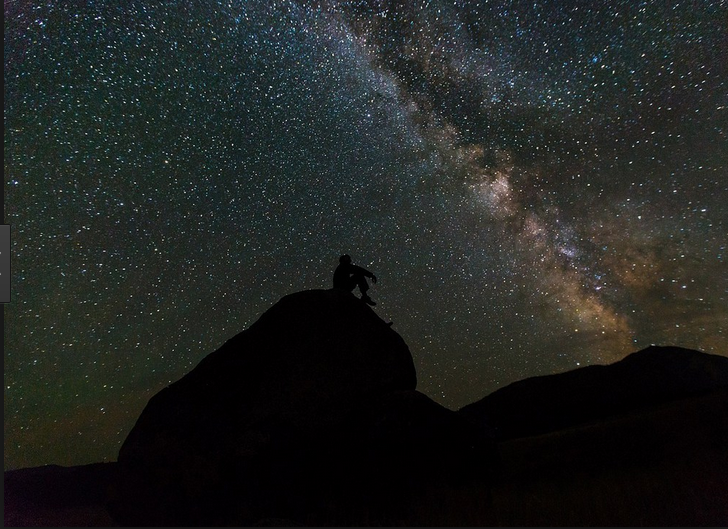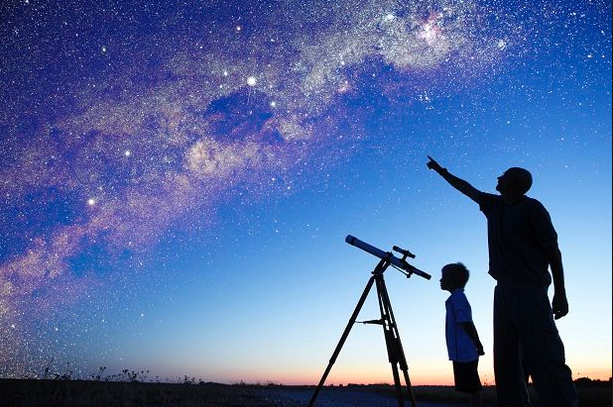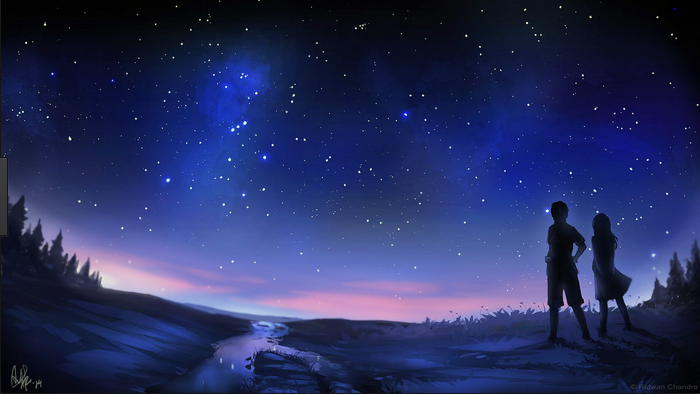“For most of human history, the stars told us where we were in space and time.”
What has been lost when we loose sight of the stars and the stories they told that guided our ancestors for millenniums?
Gene Tracy, Director of the Center for the Liberal Arts and William & Mary in Virginia penned a story I first came upon in AEON, an on-line journal. Sky Reader spoke eloquently about our lost relationship to the stars and in the process have lost ourselves.
I encourage you to visit the site and under ideal conditions to listen to the story while sitting out under a starry night sky if possible. I’ve excerpted some of the text that spoke deeply to the reason we undertook our work with PIE® the Planetarium Initiatory Event®.

Remembering the Story of the Past Can Save Our Future
“When all the stars were ready to be placed in the sky, First Woman said:
I will write the laws that are to govern mankind for all time. These laws cannot be written on the water as that is always changing its form, nor can they be written in the sand as the wind would soon erase them, but if they are written in the stars they can be read and remembered forever.
Navajo creation story quoted in ‘Fire in the Mind: Science, Faith and the Search for Order’ (1995) by George Johnson
Disconnection and Disaster
Today, we are more disconnected from the stars than ever before. Even utilitarian attachments have fallen away, as the markers that form our sense of place in the wider world have shifted from the distant to the local. Navigators once used the stars as reference marks; the GPS units in modern cellphones refer instead to a constellation of artificial satellites in orbit around the Earth, synchronized to atomic clocks in ground-based laboratories. (There has been one intriguing reversal of the trend: anxiety about the wartime vulnerability of the GPS system recently prompted the US Naval Academy to reinstate the teaching of celestial navigation. This particular unease is an apt metaphor for our general anxiety about losing our way when the lights go out, about where we stand in general relation to the world.)
We have lost a part of our selves in the process. Knowing where you are in the world is fundamental to knowing who you are. The development of our sense of spatial relationships – the ongoing discovery of where I am – is deeply entwined with memory formation. Neuroscience studies reveal that this is because forming the knowledge of place, and building that sense of our relation to other parts of the world, requires the brain to combine several different sense modalities. Hence information must be stored and then retrieved from memory, sifted and examined, and the brain’s theory of where we are in the world constructed. Combine this with the fact that it is through memory that the I endures, that memories are most effectively formed when there is some emotional charge attached, and we can see why our sense of place can be so entangled with our sense of who we are, why to be at no place is akin to being no one.
Our sense of place can be so entangled with our sense of who we are,
why to be at no place is akin to being no one.

Navigational lore in the Pacific Islands was passed down through the generations partly through storytelling. The human mind is structured around stories. Connecting things to stories, poems, songs, music and visual art makes this knowledge more real to us, charged with emotive power, which aids in the forming of memories. It helps us come to know things, and to know their place, by knowing ourselves more deeply as well. Storytelling helps us to find our place in the world.
As a small child growing up on a farm, I wandered the place with my brother, two intrepid explorers of far pastures and deep woods. I wanted to know every tree, to look every cow in the eye and come to know its thoughts. I wanted to turn over every rock in the brook and find the lurking crayfish, knowing that every single moment of time was charged with a magic that is now largely gone from my experience of the world – an electric arc of being that I now glimpse only occasionally when I glance up at the night sky and my mind is at rest.
It is essential that our stories ‘not to fade off into the nothing or the nowhere’. For me, it connects to a desire to rekindle my earliest sense of wonder, my sense of place and who I am, my sense of being at home in this world and at one with the stars.”

What is the impact on our children when they are not able to see the stars, know the stories and sense their connection with a story much grander than themselves? Are the complex issues and problems we face, like; incivility, inequality, environmental and financial deterioration in western society a result of generations who forgot where we are and who we are? And, if we are to be no place - akin to being no one, then why would we care much about anything?
For the full story go to AEON
If you’d like to help our children remember their story in the stars and discover who they really are visit: www.PIEvent.org and contact us: thecenter@rope.org
© Copyright David G. Blumenkrantz. Please share freely with attribution.
Posted in PIEPlease enter your name and email address to receive notices of blog posts, events, and other news. * indicates required.
It’t time for a Paradigm Shift – a fundamental change in beliefs, theory and approach – in developing community-centered responses to the challenges faced by today’s Youth & Community. More here>>